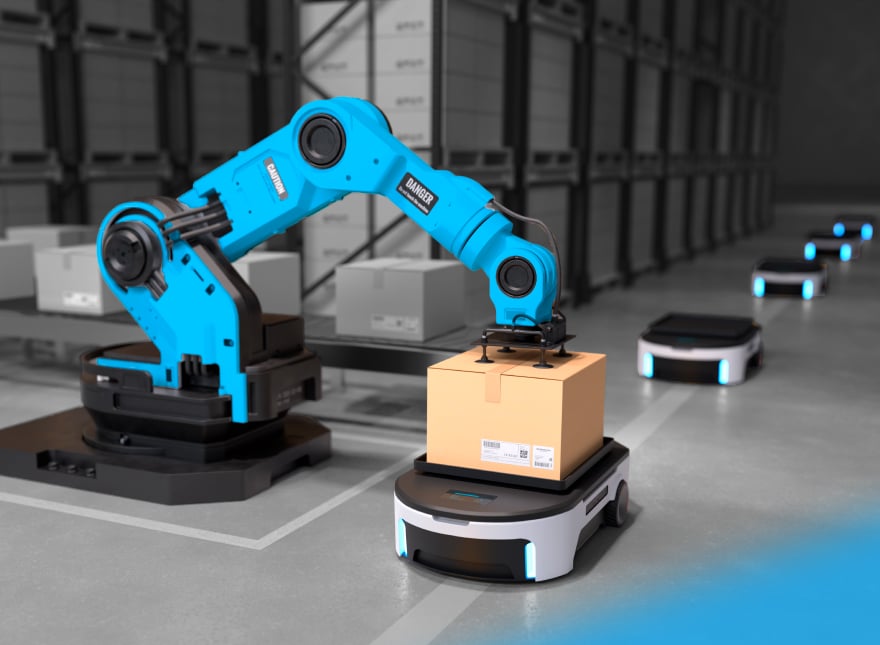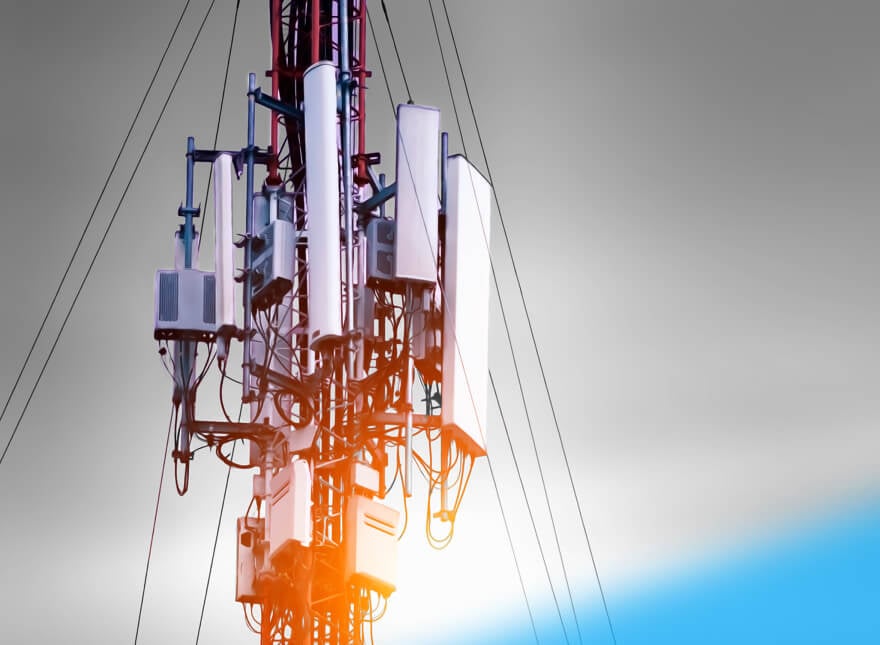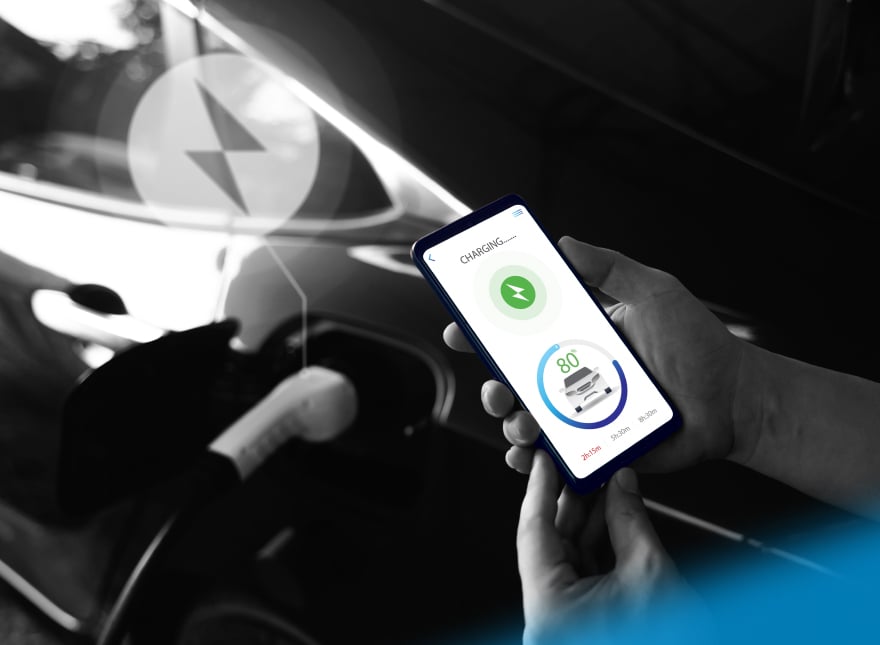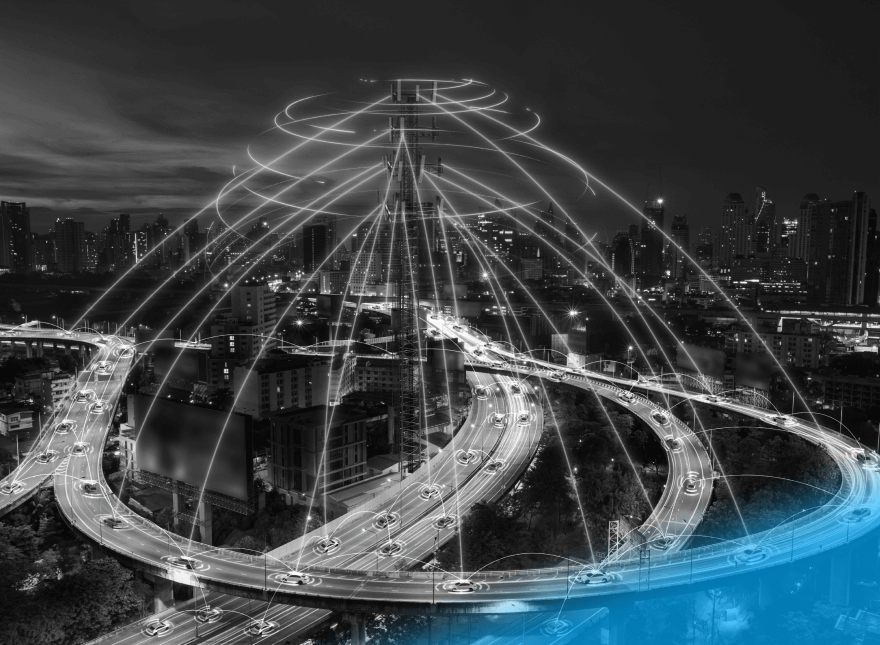In 2023, there will be over 76 million connected cars sold worldwide. Vehicle-to-everything (V2X) technology will allow them to communicate with infrastructure, the cloud, and each other. High-speed communication, ongoing network connectivity, and fast responses pave the way for smart cars. The V2X ecosystem in tandem with 5G can improve the driver experience and bring new horizons for automotive companies. Here’s how.
The Modern Vehicle Ecosystem
Today’s smart vehicles can communicate with navigation systems, traffic lights, parking facilities, and other vehicles. Cars read their surroundings through multiple recognition sensors like cameras, radars, and ultrasonics. The connectivity of automotive industry solutions is based on various communication technologies, including DSRC (dedicated short-range communications), Wi-Fi, GPS, and cellular connectivity.
V2X technology involves communication between vehicles (V2V), vehicles and infrastructure (V2I), and vehicles and other road users. Most often, these include pedestrians and cyclists (V2P). It also allows cars to establish various connections outside the vehicle:
- Vehicle to Navigation System: Integrating vehicles with navigation systems is a key tool for traffic management. The information from the map, GPS, and other cars’ sensors helps calculate arrival time, monitor traffic, determine the current speed limit, locate any accidents, and more
- Vehicle to Traffic Infrastructure: Vehicles can connect to various types of traffic infrastructure. These include signs, traffic signals, toll booths, work zones, and school zones
- Vehicle to Public Transport Systems: Connecting vehicles to public transport systems provides drivers with real-time information about public transportation and traffic conditions. It also helps suggest alternate routes and options for rescheduling trips
It’s clear that connected vehicles generate much more data than computers, smartphones, and consumer IoT devices. These data include travel routes, speed, and tracking components’ wear and tear. A modern vehicle ecosystem also captures data from cameras, maps, and traffic systems. WiFi and cellular networks help send and receive these streams. 5G, in particular, can improve the capaсity of mobile wireless networks and data speeds.
5G Network Entering the Market
5G is the fifth generation standard for broadband cellular networks. Since its first launch in April 2019, 5G has faced many challenges. Economic uncertainty caused by the lasting pandemic is just one of them. Since COVID-19, predictions on the possible volume of 5G connections by 2025 have become less optimistic. 2020’s numbers are two times lower than predicted in 2017. Recent forecasts for 2025 report:
- The spread of 5G will account for one-fifth of connections worldwide
- There will be 320 million 5G subscribers in the United States
Many service providers already benefit from this new type of connectivity, and the automotive industry is no exception. Here are some examples of recent partnerships:
- Ericsson and Telefónica Germany collaborated to use 5G in car production at a Mercedes-Benz factory
- Continental partnered with Vodafone to create a digital safety-shield that connects vehicles, cyclists, and pedestrians
- Samsung and HARMAN joined BMW to launch the BMW iNEXT equipped with a 5G Telematics Control Unit (TCU)
The use of 5G in V2X connectivity is possible thanks to a shift to cellular V2X (C-V2X) — the most recent industry standard for vehicle communication after the WLAN-based V2X. Leading automakers like Audi, BMW, Ford, and Tesla deploy C-V2X in their vehicles. C-V2X products are installed in more than 500 US cities, counties, and school districts, enabling cellular connectivity to traffic signals, school zone beacons, and emergency vehicles.
Smart cars require high-bandwidth communication, continuous connectivity to the network, and quick responses. 5G provides it all.
5G vs. 4G: Speed, Latency, and Capacity
C-V2X can employ both 4G and 5G cellular networks. Compared to 4G, the fifth generation of cellular connectivity is up to 100 times faster, with a theoretical top speed of around 20 gbps. It is capable of handling up to 1 million devices per square kilometer. 5G operates at a broader range of frequencies than 4G, adding more capacity. It can also process data at a shortened response time, delivering 4 ms in typical conditions and 1 ms at maximum speed. As of the end of 2020, 5G is available in 100 US cities, and expansion is only a matter of time.
5G can deliver low latency, enhanced bandwidth access, and widespread connectivity. But improved data transmission without sacrificing speed and better network capacity are not the only benefits of 5G networks.
V2X Use Cases Made Possible by 5G
C-V2X connectivity adds efficiency to traffic infrastructure and improves road safety. It provides automotive companies new areas for development and has a variety of possible uses. The 5G Automotive Association (5GAA), which promotes interoperable 5G-based V2X connectivity groups, put vehicle applications in four categories:
- Safety: Use cases that aim to reduce the frequency and severity of vehicle accidents (like warning drivers of collision risks)
- Convenience: Use cases that manage data and vehicle health, offering diagnostics and software updates (like over-the-air updates downloaded autonomously in safe mode and at a set time)
- VRU (Vulnerable Road User): Use cases that support a secure interaction between vehicles and non-vehicle road users — pedestrians, motorcycles, and bicycles
- Advanced Driving Assistance: Use cases that focus on improving traffic flow, traffic signal timing, variable speed limits, weather alerts, and more. For example, vehicles may notify drivers about hazardous road conditions ahead of them
V2X relies not only on sensors but also on data from nearby cars, which introduces a set of advanced solutions for cooperative driving, avoiding collisions, and safety warnings. Let’s take a closer look at some of potential uses of V2X enhanced with 5G:
1. Platooning: This allows users to drive vehicles operating in close proximity. Such a convoy can accelerate and brake simultaneously, increasing the capacity of roads and saving fuel. Moreover, according to the European Automobile Manufacturers Association, it could reduce the CO2 emissions of vehicles by up to 16%.
With 5G, high-density platooning is possible when more than three vehicles can communicate with each other. Platooning brings its greatest efficiency and safety benefits to long-distance truck driving. For example, if one driver falls asleep, their truck automatically follows the platoon leader. OEMs Volvo, MAN, Daimler, and Scania have already deployed on-road prototypes, and several US states have allowed automated following.
2. Cooperative Driving: Cooperative driving is an advanced connected vehicle solution that allows cars to adapt to surrounding traffic. Nearby cars share sensor data to coordinate their trajectories and maneuvers. One possible scenario is that when a vehicle passes, the other slows down automatically. Acting cooperatively, cars can eliminate disruptions caused by lane changes, sudden braking, or other unexpected movements. In practice, cooperative driving is impossible without 5G.
3. Queue or Hazard Warning: This warns drivers about changing weather conditions, road work, or vehicle crashes ahead. Real-time data from vehicles, networks, and infrastructure makes these alerts highly-localized and accurate. These warnings also motivate drivers to slow down and avoid sudden brakes or collisions.
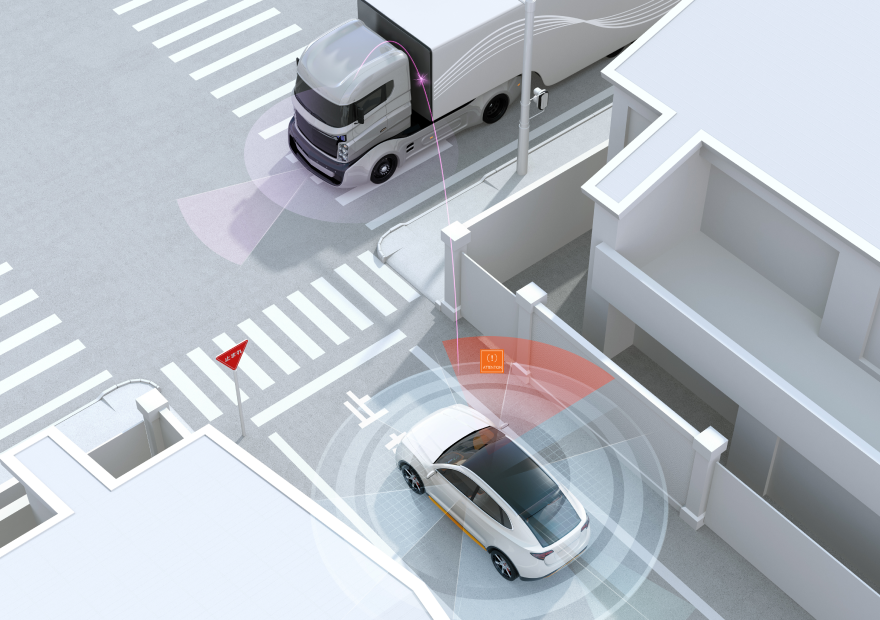 Blind intersection warning
Blind intersection warning
4. Collision Avoidance: These systems aim to alert drivers of any potential collision risk. This includes correcting steering or even forcing the car to brake. To anticipate collisions, each vehicle broadcasts its position, speed, and direction to match other nearby vehicles. It is also possible to avoid pedestrians and cyclists by detecting their smartphones. Luxury cars like the Audi A8, Honda Accord, Lexus LS, and Mercedes-Benz E-Class already have collision avoidance systems. They incorporate blind-spot monitoring, adaptive cruise control, automatic emergency braking, and more. 5G, in turn, could support the vast ocean of connections between all vehicles and determine the accurate positioning of each car and other road users.
The 5G era makes it possible for automakers to develop a wide range of advanced driver assistance services. Along with collision warnings and high-density platooning, there are e-tolling, weather updates, and even cybersecurity services to monitor vehicles for intrusions. The fifth generation of cellular connectivity enables automated driving.
5G for Driving Autonomous Vehicles
The 5G network is becoming the key technology for building autonomous vehicles. These cars produce a vast ocean of data, since each connected and autonomous vehicle generates up to 5TB of data an hour. This includes information captured from hundreds of sensors including cameras, radars, lidars, and ultrasonics. Just compare: about 3,000 people with their gadgets generate the same amount of data as a driverless vehicle for this period.
Self-driving cars require quicker data transmission than other vehicles. Fast response time is necessary to make effective decisions in real-time road conditions. Pinpointing an upcoming pedestrian's accurate position or predicting the next green light are just a few examples of how this technology works. With 5G speed, automation control systems can instantly respond in emergency situations, where quick decision-making is crucial.
With 5G, connected vehicles can process data in the cloud and allow cloud-based AI to make self-guided decisions immediately. Using data from smart cars, ML techniques can produce accurate models of the car’s surroundings, forcing cars to slow down or change lanes.
Moreover, the smart combo of 5G and edge computing helps decipher data even faster. Data processing and analysis with edge computing deploy automatically in servers closer to devices and users. This synergy accelerates communication with the edge, allows car infrastructure to process large amounts of data without hitting network limits, and reduces network traffic and transmission costs.
Bottom Line
5G is driving the automotive industry to new heights, enhancing wireless connectivity, and introducing new innovative solutions. It can support a large number of connections in a small area and detect precise positioning more quickly than ever before. 5G-based V2X connectivity brings ultra-low latency and ultra-high reliability, the benefits of which include:
- Smooth connection
- Quick data transfer with minimal loss of speed
- Revealed traffic patterns
- Improved road safety
- Enhanced predictive maintenance
Overall, the 5G network opens the door for the digital transformation of the automotive industry and brings a future with autonomous vehicles one step closer.
Section title
More articles on the topic
